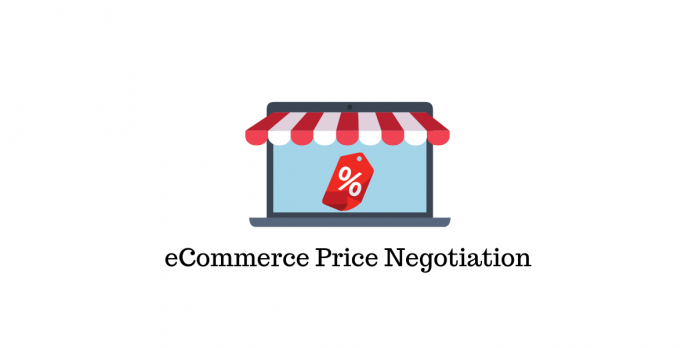Last updated - February 24, 2020
Many eCommerce merchants don’t know that they can negotiate prices with their suppliers. Additionally, those merchants who do bargain tend to focus on unit prices. Many also tend to forget the other variables that affect the total cost of acquisition (TCA).
Before taking your eCommerce site online, it makes sense to enroll in a negotiations course to decrease your costs and boost your earnings. You may be interested in learning how to best approach suppliers, get lower prices, and bargain on other factors that add up to the TCA.
Find a definitive guide on Price Negotiation Models in E-Commerce with an animated infographic and practical advises.


Research Supplier Costs
Before engaging suppliers in price negotiations, find out their pricing policies and their costs. How much does it cost the supplier to create or deliver? Knowing the supplier costs provides you some leverage. With thorough research, you are better able to make a justifiable offer that the supplier may more readily accept.
Shop Around
There may be different types of suppliers serving your market. Talk to manufacturers, wholesalers, distributors, and other types of suppliers. Determine which ones offer the most favorable terms.
Ask for quotes from each type of supplier. Once you’ve compared terms and prices, use the information to discuss better terms from competing suppliers.
Begin your search by talking to manufacturers. If you don’t meet the manufacturer’s minimum order requirements, ask for a list of preferred distributors. You may receive preferential treatment if the manufacturer refers you to their distributors.
Bargain Prices
Resist the temptation to accept the supplier’s first offer. If the supplier values your business, they are highly likely to come back with a revised offer after you’ve rejected their first offer. Ask what else the supplier can deliver at the stated price point. You may be surprised if your supplier agrees to provide extra value. This could be in the form of free shipping, quality upgrades, or after-sales service.
Negotiate Payment Terms
Positive cash flow can enable you to expand your business, increase your inventory, and pay down your debts. One way to improve your e-commerce cash flow is by negotiating favorable payment terms with your suppliers. Expert negotiations course instructors recommend not paying the full price up-front. Ask your supplier whether a net-60 or longer payment term is acceptable. You can also contract a lower down payment for better cash flow.
Shipping Rates
Freight remains one of the top expenses for e-commerce merchants. Negotiations courses for e-commerce cover topics on using freight request for proposal (FRP) to bargain shipping and handling rates. Some top tips include:
- Use your shipping volume to stipulate lower rates.
- Consider multiple shipping modes e.g. truckloads, air, sea, etc.
- Seek reimbursements for damaged or missed deliveries.
Customer Service Costs
Research by NGDATA shows that customer retention costs seven times as much as customer acquisition. As a merchant, taking on customer support costs can eat into your profits and your time. Work out a deal with your supplier to cover ongoing support relevant to your customers. Depending on the type of product or service, the supplier may provide:
- Product tutorials
- FAQ content
- Troubleshooting functions
- IT support
- Live chat
- Product updates and upgrades
Summary
Getting the best price with your e-commerce suppliers is important for controlling your costs. Try different price models to cut your e-commerce costs, improve your cash flow, and create more product or service value.











